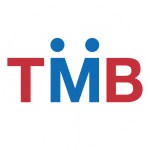These rates impact how consumers make spending decisions, which in turn impact the overall economy, allowing the Federal Reserve to maintain its objectives in creating a healthy economy. LIBOR was the amount banks charged each other for eurodollars on the London interbank market. The Intercontinental Exchange (ICE) group asked several large banks how much it would cost them to borrow from another lending institution every day. Prime is usually considered the rate that a commercial bank offers to its least risky customers. The Wall Street Journal asks 10 major banks in the United States what they charge their most creditworthy corporate customers.
- It was set as high as 20% in the early 1980s in response to inflation.
- If the Fed wants to increase the rate, it could do the opposite by going into the open market and selling government securities.
- According to U.S. regulations, lending institutions have to hold a percentage of their deposits with the Federal Reserve every night.
- The fed funds rate is the overnight rate banks and other financial institutions use to lend money to each other.
- That’s why seeing the impact of a prime rate hike might not be immediately obvious.
Remember that other factors, like credit cards and existing debt, also affect loan rates. Note that certain lending products, like fixed rate mortgages and some student loans, https://www.day-trading.info/monthly-dividend-stocks-under-5-dividend-stock/ are based on measures like SOFR and are less tied to the movement of the prime rate. The prime rate is one of the main factors banks use to determine interest rates on loans.
The prime rate is determined by the current federal funds target rate, which is set by the Federal Reserve. This rate guides the interest rates that banks charge each other when they lend money overnight to meet Fed capital reserve requirements. The prime rate, as reported by The Wall Street Journal’s bank survey, is among the most widely used benchmark in setting home equity lines of credit and credit card rates.
Odds Now At 90% (Likely) The U.S. Prime Rate Will Hold At 8.50% After The November 1, 2023 FOMC Monetary Policy Meeting
The federal funds rate refers to the interest rate that banks charge other institutions for lending excess cash to them from their reserve balances on an overnight basis. Banks generally use fed funds + 3 to determine the current prime rate. The rate forms the basis for other interest rates, including rates for mortgages, small business loans, or personal loans. When the prime rate goes up, so does the cost to obtain small business loans, lines of credit, car loans, mortgages, and credit cards. The fed funds rate is the overnight rate banks and other financial institutions use to lend money to each other.
What Loans Are Not Affected by a Change in the Prime Rate?
Most base it off the national average listed under the WSJ prime rate, but some could charge more or less depending on their goals. While some factors are outside of your control, you can still be informed about the current prime rate and how banks decide on it. Below, Select breaks down what you need to know about the prime rate and how it affects your finances. The FOMC makes its decisions about rate adjustments based on key economic indicators that may show signs of inflation, recession, or other issues that can affect sustainable economic growth. The indicators can include measures like the core inflation rate and the durable goods orders report.
First FOMC Meeting of 2024 Adjourned: United States Prime Rate Continues at 8.50%
The interest rate the lending bank can charge is the federal funds rate, or fed funds rate. When the prime rate goes up, so does the cost to access small business loans, lines of credit, car loans, certain mortgages and credit card interest rates. Since the current prime rate is at a historic low, it costs less to borrow than in the past. Any existing loan or line of credit that has a fixed interest rate is not affected by a change in the prime rate. This includes any student loans, mortgages, savings accounts, and credit cards that are issued with fixed rates rather than variable rates.
That said, the Wall Street Journal’s prime rate is one of the most commonly cited averages — the “official source,” so to speak. The Wall Street Journal surveys 8 best affiliate management software of 14 we reviewed + guide 10 of the largest US banks and publishes a consensus prime based on their rates. The Journal reports this average prime rate daily, even if it hasn’t changed.
You’ll also get the best rates by comparing offers from multiple lenders, maintaining a good credit score, and managing your debt. Many variable-rate financial products are tied to benchmark rates, primarily the prime rate, and until it was discontinued, LIBOR. And while the Fed doesn’t control these rates directly, they do tend to move in the same direction https://www.topforexnews.org/brokers/antony-tan-joins-is-prime-hong-kong-from-invast/ as the federal funds rate. The prime rate does not directly impact auto loans, but generally, a higher prime rate results in higher auto loan rates, making it more expensive for lenders to borrow money. The Federal Reserve adjusts the fed funds rate to influence other interest rates. When the fed funds rate is high, other interest rates will go up too.
This rate tends to be higher than the target fed funds rate, partly to encourage banks to borrow from other banks at the lower federal funds rate. As the prime rate fluctuates, so should your adjustable rate at the annual reset. Just as the federal funds rate serves as the basis for the prime rate, the prime rate serves as the starting point for most consumer banking products. Perhaps less clear is whether a change to this interest rate, known as the federal funds rate, impacts you on a personal level. If you have a credit card, an adjustable-rate mortgage, or a private student loan, it probably does.
By increasing the amount of money in the system it can cause interest rates to fall. Conversely, by decreasing the money supply it can make interest rates rise. Most credit cards have variable interest rates set several percentage points above the prime. Although it’s a variable or floating interest rate, the prime does not change regularly. Rather, banks adjust it according to the economic and business cycle shifts. Or it can potentially change several times within one year, especially in economically turbulent times.
Bankrate.com is an independent, advertising-supported publisher and comparison service. We are compensated in exchange for placement of sponsored products and services, or by you clicking on certain links posted on our site. Therefore, this compensation may impact how, where and in what order products appear within listing categories, except where prohibited by law for our mortgage, home equity and other home lending products. While we strive to provide a wide range of offers, Bankrate does not include information about every financial or credit product or service. When the prime rate changes, it affects individuals’ and businesses’ savings rates and ability to borrow. The best ways to prepare for changing prime rates are by staying informed on the state of the economy and updates from the Federal Reserve.






















